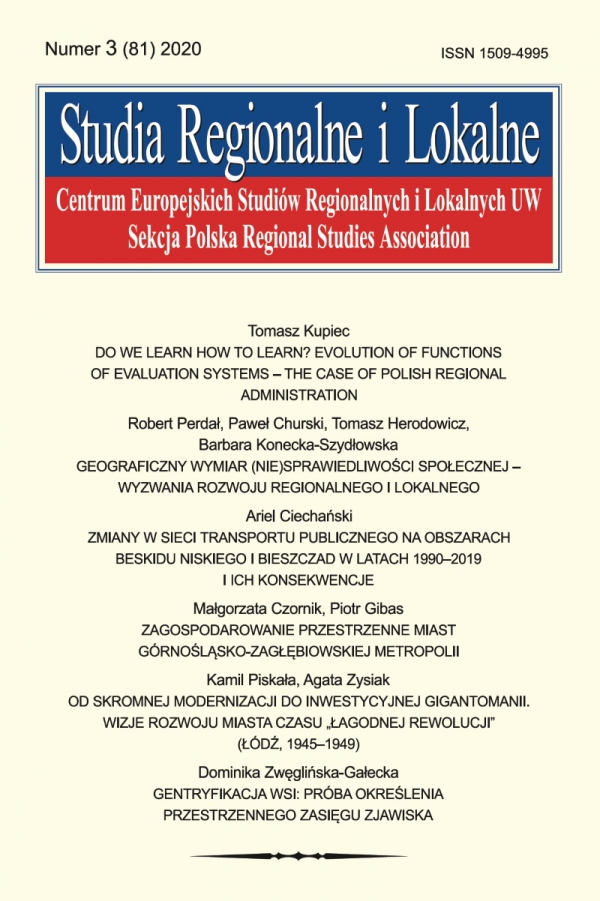Issue:
3(81)/2020
Kamil Piskała, Agata Zysiak
From Modest Modernisation to Investment Gigantomania: The Prospects of City Development from the Times of the ‘Gentle Revolution’ (Łódź, 1945–1949)
DOI: 10.7366/1509499538105
Od skromnej modernizacji do inwestycyjnej gigantomanii. Wizje rozwoju miasta czasu „łagodnej rewolucji” (Łódź, 1945–1949)
Miasto socjalistyczne kojarzy się głównie z imperialną architekturą Mińska czy wschodniego Berlina, funkcjonalnym podziałem dzielnic, monumentalnymi budynkami publicznymi bądź blokowiskami. Artykuł ma na celu rekonstrukcję wizji rozwoju miasta w pierwszym okresie powojennym 1945–1949. Na przykładzie Łodzi, największego miasta Polski przy zburzonej Warszawie i robotniczej stolicy przemysłu włókienniczego, rekonstruuje prasowe dyskursy modernizacyjne, pokazując, że w pierwszym okresie odbudowy proponowano skromne wizje rozwoju miasta, dostosowane do potrzeb mieszkańców i wygody życia codziennego. Dopiero z zaostrzeniem kursu politycznego po 1948 r. zostały one zastąpione przez śmiałe wizje socjalistycznego miasta, gigantycznych inwestycji i budowy nowych dzielnic dla robotniczych mas.
From Modest Modernisation to Investment Gigantomania: The Prospects of City Development from the Times of the ‘Gentle Revolution’ (Łódź, 1945–1949)
A socialist city is mainly associated with the imperial architecture of Minsk or East Berlin, the functional division into districts, monumental public buildings, or housing developments. This article aims at restructuring the prospect of city development in the first post-war period, i.e. 1945-1949. Based on the example of Łódź – Poland’s biggest city in view of the demolished Warsaw as well as the working-class capital of textiles – I reconstruct modernisation discourses in press, showing that in the first period of the reconstruction, modest suggestions as to the city development were made, ones adjusted to the needs of its inhabitants and the comfort of everyday life. It was only with the aggravation of the political course after the year 1948 when these were replaced with more daring prospects of a socialist city, gigantic investments, and the construction of new districts for the working-class masses.
Affiliation:
Kamil Piskała: Uniwersytet Łódzki, Wydział Filozoficzno-Historyczny, ul. Kamińskiego 27a, 90-219 Łódź, Polska; ORCID: 0000-0001-9955-0472;
kamil.piskala@uni.lodz.pl Agata Zysiak: Uniwersytet Warszawski, Instytut Studiów Społecznych im. R. Zajonca, ul. Stawki 5/7, 00-183 Warszawa, Polska; ORCID: 0000-0002-6058-3506;
a.zysiak@uw.edu.pl 


